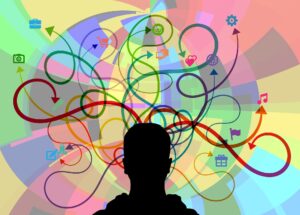The Temptation

Imagine this situation: you just finished dinner, and you finally sit down with your online course to read and study when you get a text from a friend. You check your phone, and it turns out you actually have 3 unread texts. After answering the first friend, you go back and read your other messages, replying as you come to them. You and your friends send a few texts back and forth, and one sends something hilarious. You laugh out loud and have to share it with another friend, so you open up your social media to share it.
When you open your social media, you see a few unread notifications, so you check out your notifications and then scroll through your feed for a little bit to see if there is anything new going on. You suddenly realize you forgot to respond to a message from your friend, so you hurry to do that. You look up from your phone for a second, and you see your textbook, still waiting for you to study, and you realize you spent the last 20 minutes distracted from studying. You put your phone away and decide to start studying.
This type of task-switching or context-switching as described in the situation is all-too-familiar for most people. But is it good for you?
Kaitlyn May and Anastasia Elder conducted a literature review study in 2018 that examined 38 articles from 2003 to 2017 that researched the effect of task switching on learning. They found that trying to do too many things at once resulted in less effective learning, lower exam scores, and decreased study efficiency.[1]
The results found that the mere presence of the phone reduced the students’ cognitive performance.[2]
Minimize Distractions
In this module on thinking and intelligence, we’ll learn about a few techniques to improve your cognitive skills as well as ways to avoid falling prey to some everyday cognitive errors. One common misunderstanding that people have is that they think they can multitask, or do two things at the same time, but it is actually impossible for your brain to focus on two things at the same time.
If you think you are a really good multitasker, you might be a great task switcher, but you cannot attend to two different stimuli at the same time. Task switching is simply repeatedly switching what you pay attention to (like two different tasks), but you are only paying attention to one thing at a time. Rapidly switching back and forth between tasks reduces overall efficiency and can lead to errors, decreased focus, and burnout.
So, how can you minimize distractions and reduce the time you spend switching tasks?
- You could try putting your phone away, keeping it out of reach, or studying in a place where distractions are less likely to happen. Of course, distractions will still arise, and you’ll need breaks, but you can chunk your time and try to schedule a focused time to work on specific tasks.
- Experts agree that you still need study breaks, though there are various opinions as to how frequent they should be—generally at least a break every hour.
- Still, some time management techniques specify times, such as the Pomodoro technique which has you work for 25 minutes and then take a 5 minute break (then repeat), or the 52/17 rule, which encourages 52 minutes of uninterrupted work, and then a 17 minute break. Y
- ou can play around with a schedule and cadence that works best for you, but hopefully, by minimizing distractions and avoiding multitasking, you can reduce your stress and improve your performance.
- May, K. E., & Elder, A. D. (2018). Efficient, helpful, or distracting? A literature review of media multitasking in relation to academic performance. International Journal of Educational Technology in Higher Education, 15(1), 13. ↵
- Ward, A. F., Duke, K., Gneezy, A., & Bos, M. W. (2017). Brain Drain: The Mere Presence of One’s Own Smartphone Reduces Available Cognitive Capacity. Journal of the Association for Consumer Research, 2(2), 140–154. https://doi.org/10.1086/691462 ↵